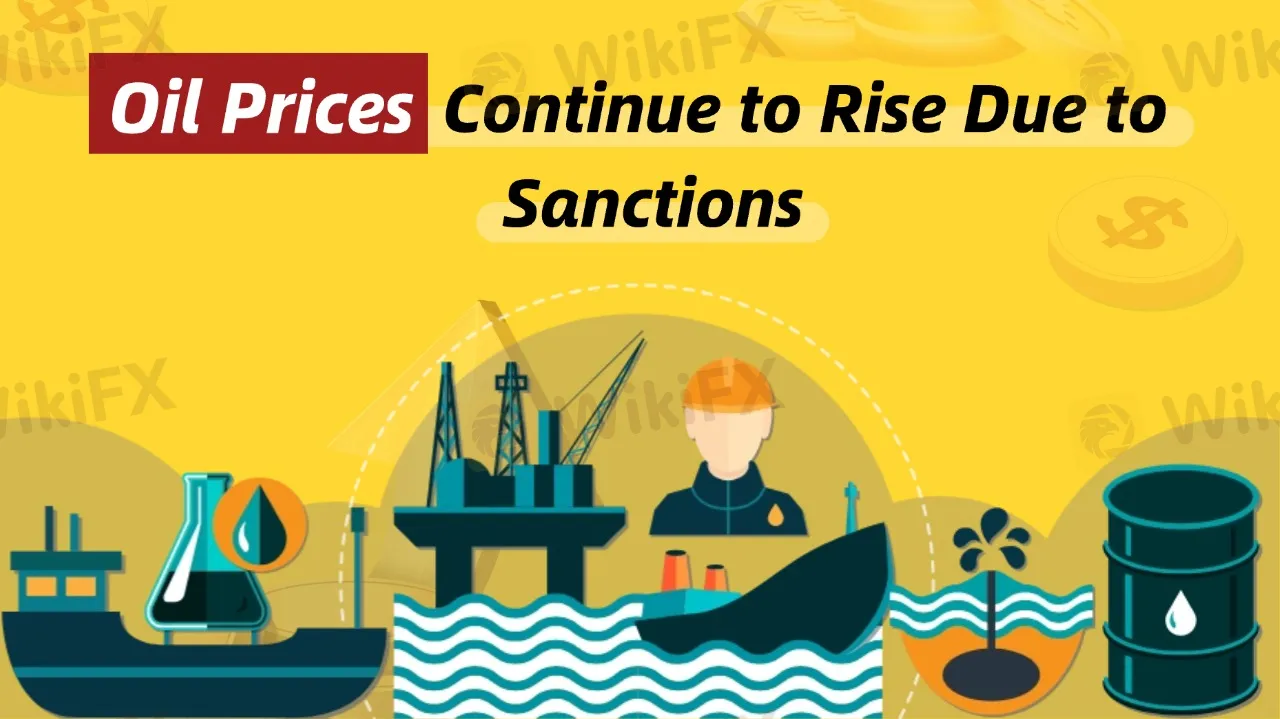简体中文
繁體中文
English
Pусский
日本語
ภาษาไทย
Tiếng Việt
Bahasa Indonesia
Español
हिन्दी
Filippiiniläinen
Français
Deutsch
Português
Türkçe
한국어
العربية
Oil Prices Continue to Rise Due to Sanctions
Abstract:Last Friday, oil prices closed slightly lower but increased for the fourth consecutive week, mainly due to the impact of the latest U.S. sanctions on Russian energy trade, which heightened concerns about oil supply disruptions.

Brent crude futures dropped by 0.6%, settling at $80.79 per barrel, but rose 1.3% for the week. U.S. crude futures fell by $0.80, or 1%, to $77.88 per barrel, climbing 1.7% for the week.
Sanctions on Russia are tightening supply in countries like Europe and India. Furthermore, investors are evaluating the potential impact of U.S. President-elect Trump's return to the White House. His nominee for Secretary of the Treasury indicated plans to implement stricter sanctions on Russian oil.
Following the Gaza ceasefire agreement, expectations grew that the Houthi rebels in Yemen would halt attacks on ships in the Red Sea, which placed some pressure on oil prices.
Despite a slight pullback last Friday, oil prices remain on an upward trend due to concerns over the Russian sanctions. U.S. sanctions on Russian oil exports have intensified global oil supply tightness, driving prices higher. According to HSBC's latest report, the bank raised its 2025 Brent crude price forecast from $70 per barrel to $73, and its first-quarter forecast from $70 to $77. This adjustment mainly reflects the impact of the latest U.S. sanctions on Russia's energy market.
U.S. sanctions have nearly doubled the number of tankers on the sanction list, which has contributed to recent price increases, pushing oil above $80 per barrel. Although this effect may be short-term, Russia's oil and product exports are expected to face significant pressure.
Overall, despite the pullback in oil prices, the uncertainty surrounding global oil supply and U.S. sanctions on Russia continue to support price increases. The market is caught between OPEC+ overcapacity and persistent geopolitical risks.
HSBC expects Brent crude prices to fluctuate between $70 and $80 per barrel, slightly lower than in the past two years. OPEC+'s ample capacity is expected to limit price surges, but geopolitical risks, particularly the impact of sanctions on Russia, could still push oil prices higher. Investors need to closely monitor market dynamics and the further development of sanctions to assess future price movements.

Disclaimer:
The views in this article only represent the author's personal views, and do not constitute investment advice on this platform. This platform does not guarantee the accuracy, completeness and timeliness of the information in the article, and will not be liable for any loss caused by the use of or reliance on the information in the article.
Read more

Dark Side of AETOS: They Don’t Want You to Know
AETOS is an Australia-based broker. All over the internet, you will find positive reviews about this broker, but no one is talking about the risks involved with AETOS. However, we have exposed the hidden risks associated with AETOS

15 Brokers FCA Says "Are Operating Illegally" Beware!
If a reputable regulator issues a warning about unlicensed brokers, it's important to take it seriously — whether you're a trader or an investor. Here is a list you can check out- be cautious and avoid getting involved with these scam brokers.

6 Effective Forex Strategies for Unstable Market Trends
Forex market is unpredictable and affected by global events, central bank policies, geopolitical tensions, and even unexpected news releases .This volatility can be challenging for traders. However, those with a solid plan and strong strategies are less affected by market fluctuations..To avoid losses and stay stable in volatile conditions, it’s crucial to understand these 6 effective strategies. Theyll help you navigate market trends.

What WikiFX Found When It Looked Into FXTF
In the complex world of online trading, verified licenses and confirmed operational presence offer important reference points for evaluating a broker. FXTF is one such firm that has undergone regulatory registration and address verification
WikiFX Broker
Latest News
Lead Prices Remain in the Doldrums Despite Seasonal Expectations
Myanmar Tin Ore Shipments from Wa Region Set to Resume
Major U.S. Banks Plan Stablecoin Launch Amid Crypto Regulations
SHFE Tin Prices Stabilise in the Night Session After Initial Decline
Treasury yields rise as Trump denies plans to fire Fed Chair Powell
Forex Trading Simulator vs Demo Account: Key Differences
Different Forex Market Regulators But One Common Goal - Investor Safety
Do You Really Understand Your Trading Costs?
5 Reasons Why Some Traders Choose XChief
Harsh Truths About ATC Brokers Every Trader Must Know
Currency Calculator


